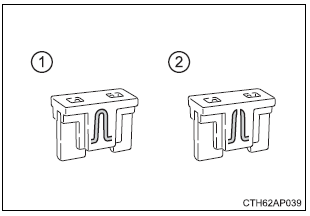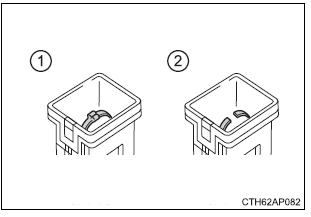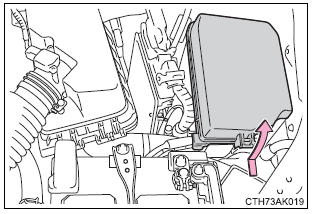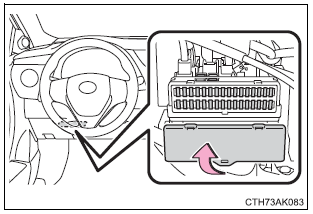 |
| 2017 Toyota Corolla |
If any of the electrical components do not operate, a fuse may have blown. If this happens, check and replace the fuses as necessary.
Turn the engine switch off.
Open the fuse box cover.
Engine compartment Fuse Box
Push the tab in and lift the lid off.
Under the driver’s side instrument panel Fuse Box
Remove the lid.
Remove the fuse with the pullout tool.
Only type A fuses can be removed using the pullout tool.
Only type A fuses can be removed using the pullout tool.
 |
| Fuse Puller Location |
Check if the fuse is blown.
1. Normal fuse
2. Blown fuse
Replace the blown fuse with a new fuse of an appropriate amperage rating.
The amperage rating can be found on the fuse box lid.
 |
| Type A Fuse - Normal Fuse , Blown Fuse |
 |
| Type B Fuse - Normal Fuse , Blown Fuse |
 |
| Type C Fuse - Normal Fuse , Blown Fuse |
■ After a fuse is replaced
● If the lights do not turn on even after the fuse has been replaced, a bulb may need replacement.
● If the replaced fuse blows again, have the vehicle inspected by your Toyota dealer.
■ If there is an overload in a circuit
The fuses are designed to blow, protecting the wiring harness from damage.
● If the lights do not turn on even after the fuse has been replaced, a bulb may need replacement.
● If the replaced fuse blows again, have the vehicle inspected by your Toyota dealer.
■ If there is an overload in a circuit
The fuses are designed to blow, protecting the wiring harness from damage.
WARNING
■To prevent system breakdowns and vehicle fire
Observe the following precautions.
Failure to do so may cause damage to the vehicle, and possibly a fire or injury.
●Never use a fuse of a higher amperage rating than that indicated, or use any other object in place of a fuse.
●Always use a genuine Toyota fuse or equivalent.
Never replace a fuse with a wire, even as a temporary fix.
●Do not modify the fuses or fuse boxes.
NOTICE
■Before replacing fuses
Have the cause of electrical overload determined and repaired by your Toyota dealer as soon as possible.



No comments:
Post a Comment